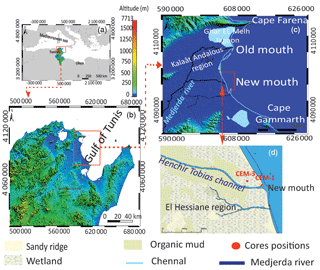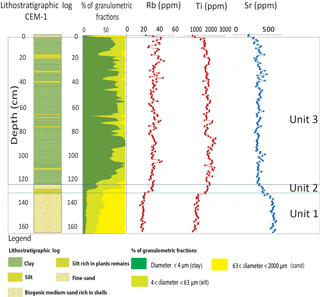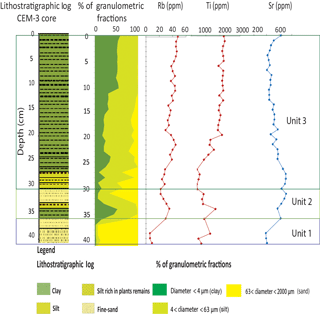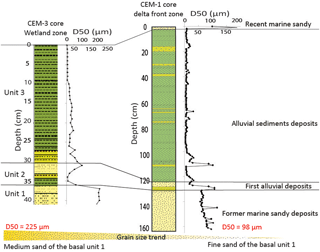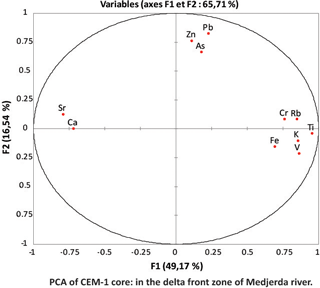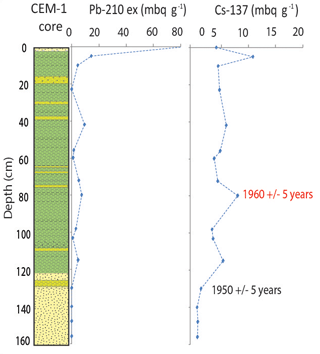The sedimentological changes caused by human impact at the artificial channel of Medjerda-River (Coastal zone of Medjerda, Tunisia)
Recent sedimentary and morphological changes at the new mouth of Medjerda-River (Gulf of Tunis) are investigated using a multiproxy approach of sediment cores complited by 210Pbex and 137Cs method dating. The subject of the study is to focus on surveying the sedimentary evolution of Medjerda-Raoued Delta caused by the human intervention in the management of the main tributaries of the Medjerda-River (artificial channel of Henchir Tobias). Sediment cores (CEM-1 and CEM-3) were subjected to both multiproxy approaches (Grain size, geochemical analysis and dating radiometric 210Pbex and 137Cs). The sedimentological analysis of the new deltaic deposits shows a progradation sequence with the silt and clay deposits on the historic sandy substratum. The mean grain size evolution on the old beach profile shows a decreasing trend from backshore (CEM-3) to nearshore (CEM-1). The geochemical results show varying concentrations of chemical elements such as Fe, K, Rb, Nb, Cr, Ti, Ba, Ca, Sr, Zr, V, and potentially toxic metal trace elements such as Pb, Zn and the As. The Principal component Analysis (PCA) applied in the geochemical elements evolution confirms the marine origin of the sand deposits in the basic layers of the two cores. The chronological method (210Pbex and 137Cs) affirms that the first fluvial deposits were set up only after 1950. The sedimentological and geochemical result confirm the actual unless of coarser fluvial supplies under the human activities leading the negative coastal sediment balance and the shoreline retreat as well.






